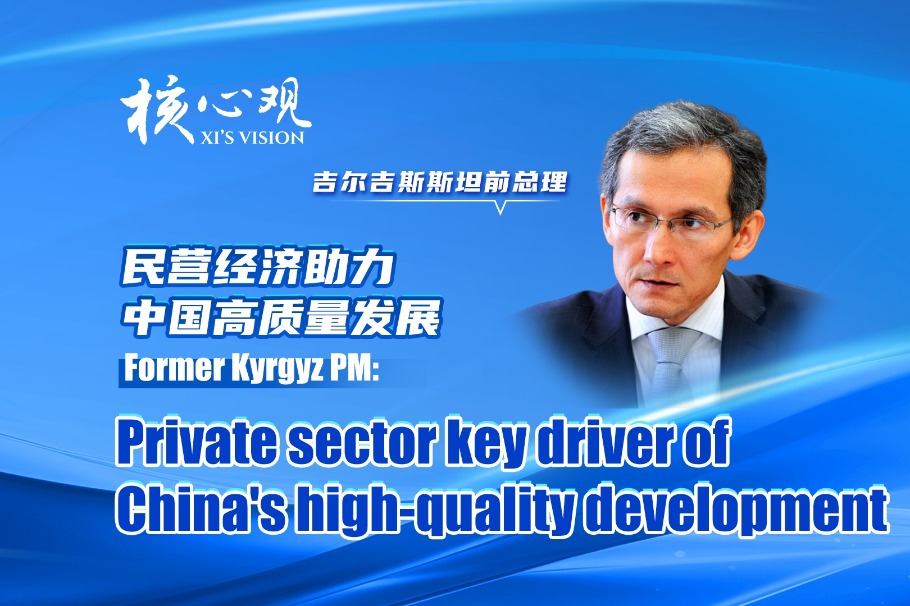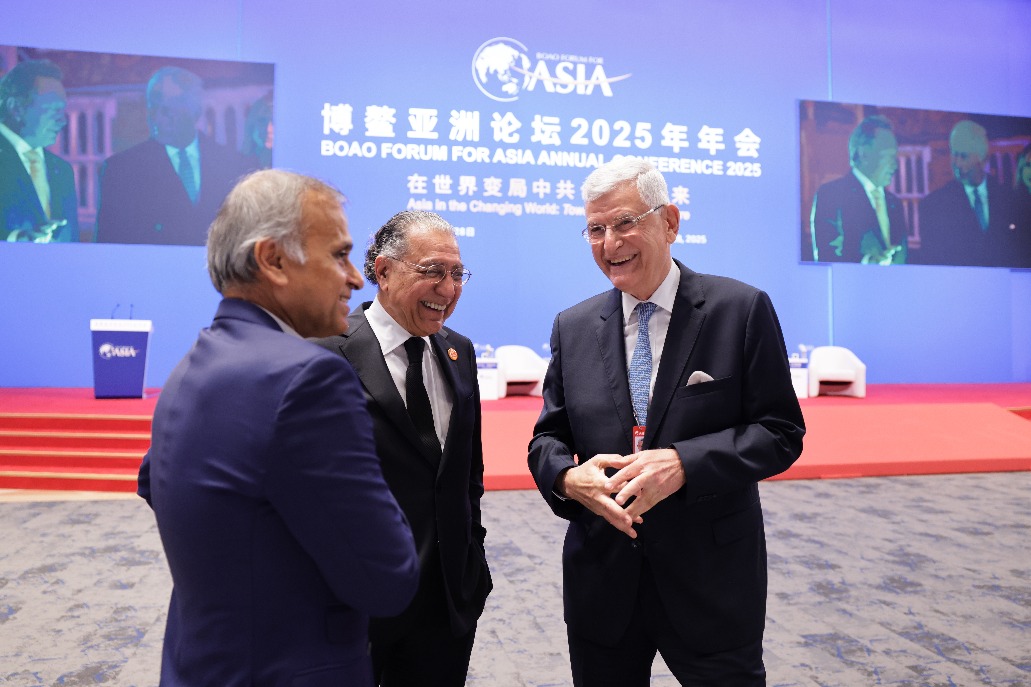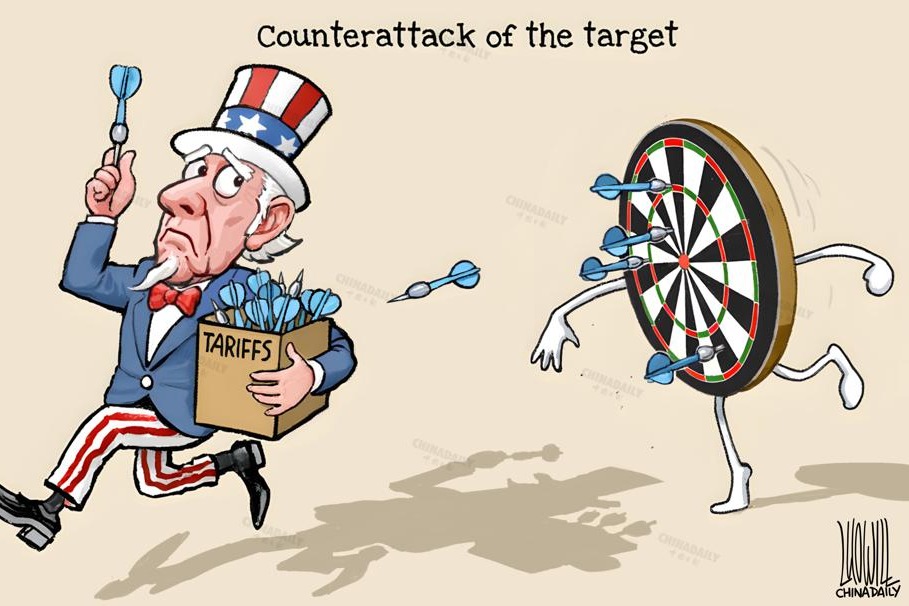Talks revive hopes of collective prosperity
By Wilson Lee Flores | China Daily Global | Updated: 2025-03-28 09:04

In a world increasingly fractured by chaotic conflicts, narrow-minded protectionism, geopolitical uncertainty and self-destructive rivalries, the recent trilateral meeting between the top diplomats of China, Japan and the Republic of Korea in Tokyo offers a glimmer of hope — not just for Northeast Asia, but for the entire continent.
Chinese Foreign Minister Wang Yi underscored the significance of this partnership, noting that the three nations represent a combined population of nearly 1.6 billion and total economic output exceeding $24 trillion. Together, they wield immense influence on the global stage.
The agreement to promote "future-oriented" cooperation among these economic and cultural powerhouses is a timely reminder of the region's potential to lead the world toward stability and shared prosperity.
It also evokes the glorious epochs of East Asian history, such as the Tang Dynasty (618-907), Song Dynasty (960-1279) and Ming Dynasty (1368-1644), when the region stood as a beacon of harmony, innovation, mutual respect and Confucian moral values.
Tang Dynasty, often regarded as a golden age of Chinese civilization, was marked by an open and inclusive approach to diplomacy, trade and cultural exchanges. During this period, China wielded its vast wealth and power to foster a thriving network of relationships across Asia.
Japanese and Korean scholars, merchants and artisans traveled to the Tang capital of Chang'an — modern-day Xi'an in Shaanxi province — bringing back not only goods but also ideas, art and technology that enriched their societies.
Japan, for instance, adopted Tang-style governance, architecture and writing systems, while Korean kingdoms such as Silla maintained close ties through trade and diplomacy.
This era of cross-cultural exchanges laid the foundation for a shared East Asian identity, one that valued win-win cooperation over conflict and mutual benefit over zero-sum competition.
The Song Dynasty and the Ming Dynasty further solidified China's role as a regional leader. The Song era saw unprecedented advancements in science, technology and commerce, with revolutionary innovations such as gunpowder, compass and paper currency.
The Maritime Silk Road, which flourished during the Song and Ming periods, connected China with Southeast Asia, India and beyond, creating a vibrant economic ecosystem that benefited all participants. The Ming Dynasty's treasure voyages, led by Admiral Zheng He, exemplified China's willingness to engage with its neighbors on equal and friendly terms, fostering trade and cultural exchanges rather than conquest.
These historical precedents demonstrate that when East Asia is united by a vision of shared progress, it can scale extraordinary heights. The Tang, Song and Ming dynasties were not only periods of Chinese prosperity but also eras when the region as a whole thrived through cooperation, robust trade and dynamic cultural exchanges.
Modern opportunities
Fast-forward to the present, and the challenges facing the region are starkly different but no less urgent. The specter of a US-China trade war, the Korean Peninsula nuclear issue, the provocations of certain Taiwan-based politicians, attempts to excessively militarize East Asia through costly arms races and defense blocs, and the lingering scars of historical grievances have often strained relations between China, Japan and the ROK.
Yet, the recent trilateral meeting in Tokyo suggests a willingness to transcend these divisions and focus on common goals. Japanese Foreign Minister Takeshi Iwaya's emphasis on guiding the region "from division to cooperation" is a powerful statement of intent, one that echoes the spirit of East Asia's golden ages.
The areas of cooperation outlined — addressing low birth rates, aging populations and economic challenges — are not only pragmatic but also deeply symbolic. They reflect a recognition that the fates of the three nations are intertwined and that their collective strength lies in their ability to work together. Wang's call to "constantly unearth the potential for cooperation" is particularly poignant, as it underscores the untapped opportunities that lie ahead.
Of course, historical grievances cannot be ignored. Wang's reminder that this year marks the 80th anniversary of the end of China's War of Resistance Against Japanese Aggression (1931-45) is a sobering acknowledgment of the past. Yet his insistence that the future can only be built on sincere reflection offers a path forward. Similarly, Japan's and the ROK's recent efforts to move beyond their own historical disputes, such as the issue of wartime conscripted labor, demonstrate that reconciliation is possible when there is political will.
The trilateral cooperation also has broader implications for the region and the world. As the United States under President Donald Trump continues to pursue an unpredictable and often isolationist foreign policy, the need for Asian nations to take the lead in shaping their own destiny has never been greater. By working together, China, Japan and the ROK can not only address their own challenges but also serve as a stabilizing force in an increasingly fractured global order.
Shared future
The potential for this partnership is immense. Imagine a Northeast Asia where Chinese industrial capabilities, Japanese technological expertise and the ROK's innovation are combined to tackle issues such as climate change, energy security and public health.
Picture a region where cultural exchanges and educational programs revive the inclusive and cosmopolitan spirit of the Tang Dynasty, fostering a new generation of leaders who see themselves as part of a shared East Asian community. Envision a future where the lessons of history are not a source of division but a foundation for unity.
This is not a utopian dream but a realistic possibility, one that is within reach if China, Japan and the ROK can maintain their commitment to "future-oriented "cooperation.
As the world watches, the three nations have the opportunity to write a magnificent new chapter in the story of East Asia — one that honors the legacy of their past while embracing the boundless promise of a brighter, more harmonious future.
In a world that often feels adrift, the rekindling of this trilateral partnership is a reminder that even in the darkest times, the seeds of hope can take root. Let us hope that this time they will grow into a mighty tree whose branches shelter not just Asia, but the entire world.
The author is an economics and politics analyst, an award-winning columnist for the Philippine Star and Abante newspapers, a book author, college professor, and moderator of the Pandesal Forum.
























